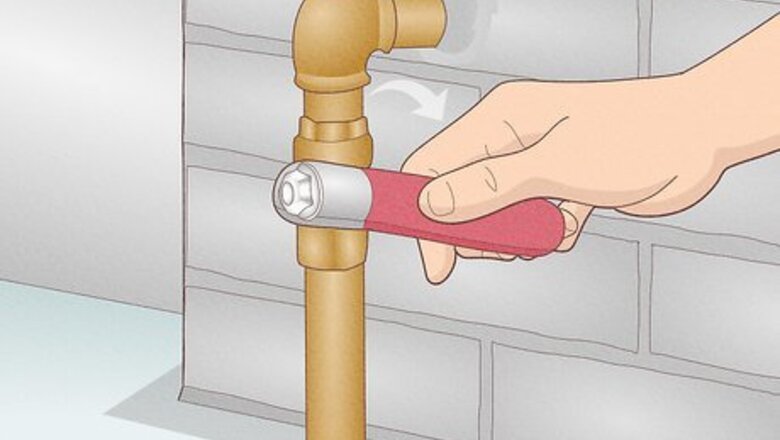
views
- Check the faucet seals inside the valve in the wall, and replace them if they’re corroded or damaged.
- Inspect the seat washers and bonnet washers at the end of the faucet for cracks. Install new washers if the old ones are breaking down.
- Look for damage on the brass packing nut or the rubber packing washer inside the faucet bonnet. Replace them if they’re worn out.
- Replace the entire faucet stem or cartridge if it’s heavily corroded or damaged. Get one that matches the model of your faucet so it fits properly.
Faucet Disassembly
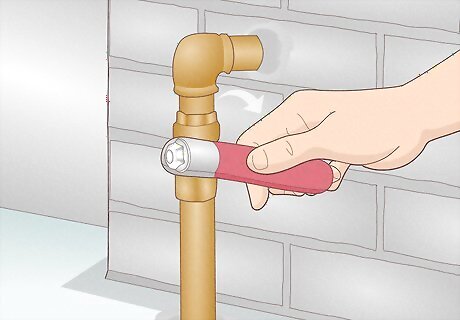
Shut off the water supply to your home. Look for the water supply valve attached to a pipe in your basement or garage, and turn it clockwise to the “Off” position. If you can’t find your supply valve there, then check for the main shutoff valve in an access box outside your home. After you shut off the valve, turn on your tub faucet to drain out all the water that’s still remaining in the pipes. Let everyone in your household know that you’re working on your tub faucet and shut off the water.
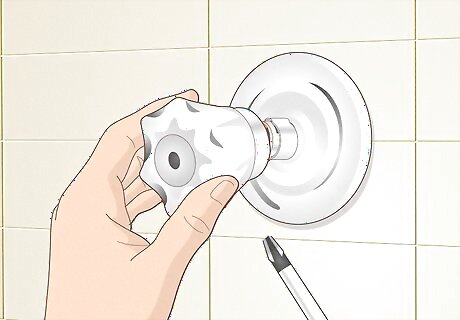
Loosen the faucet screw to pull off the handle. Look for the screw on the front or the bottom of the faucet handle. Turn the screw counterclockwise with a screwdriver until you’re able to pull it out. Then, just firmly hold onto the handle and pull it off of the faucet. If your faucet has a decorative plate on the end, then the screw is hidden underneath it. Use a flathead screwdriver to pry it off. Be careful not to force the handle off the faucet, or you could damage the pipes. Instead, secure a bathroom handle puller to the end to remove it. If that still doesn’t work, then you may need to contact a plumber.
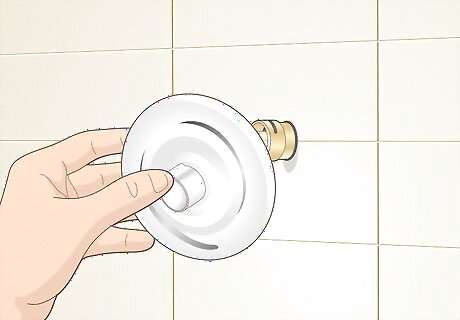
Remove the collar piece from around your faucet. The collar piece is the metal decorative cylinder that protects the internal parts of your tub faucet. Check the bottom of the collar for a screw or bolt, and turn it counterclockwise to loosen it. Then, just firmly grasp the collar and pull it straight off to expose the inside of the faucet. If you’re repairing a leaky faucet with two handles, then also remove the decorative escutcheon plate at the base of the faucet. Cut any caulk with a utility knife and loosen any screws to take it off.
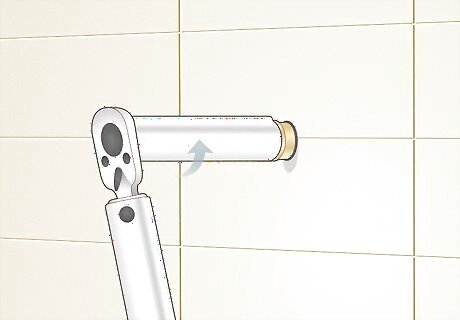
Use a bath socket wrench to remove a two-handle faucet stem. A two-handle faucet uses compression faucet stems that screw directly into the valve pipe in the wall. Slide the bath socket wrench over the stem and fit it over the hex nut. Turn the wrench counterclockwise to loosen the stem from the wall valve. Once it’s loose, simply pull the faucet stem straight out. If the hex nut sticks out past the wall, then you may be able to loosen it with a standard wrench. If you have trouble turning the wrench, try applying lubricating spray to the hex nut to loosen it. Remove both of the faucet handle stems since either of them could cause a leak.
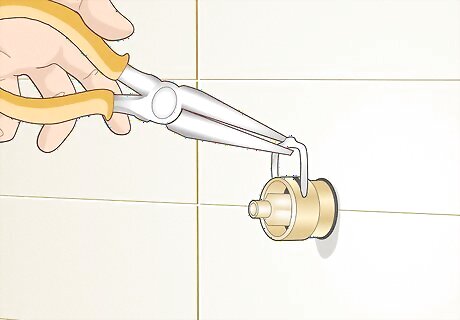
Unclip and pull out a single-handle faucet cartridge with pliers. Look for the metal retaining clip at the top of the cylindrical faucet cartridge, and pull it out with needlenose pliers. To remove the cartridge, pinch the end of the cartridge with your pliers and pull it straight out from your wall. It’s normal if a little water drips out of the faucet or pipe once you remove the cartridge.
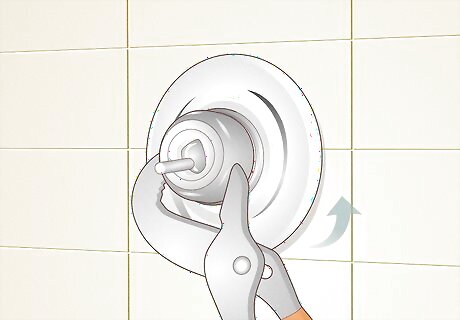
Unscrew the ball joint if you have a single-lever faucet. If you see a ball with a lever when you remove the handle, then pop out the plastic piece covering the ball. Simply lift and pull the ball out of the faucet to remove it and expose the seat valves behind it.
Replacing Faucet Parts
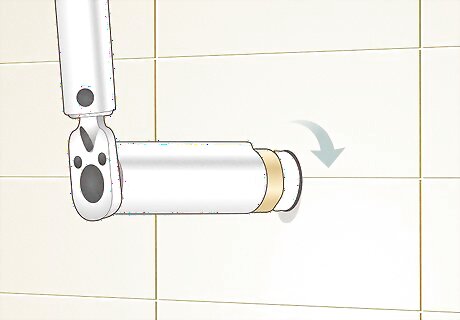
Install new seats inside the faucet valve if they’re corroded or damaged. The seats are the small, cylindrical metal pieces at the ends of the valves on a two-handle faucet. Stick a seat wrench into the end of the valve in the wall and turn it counterclockwise to remove the seat. Wrap Teflon tape around the threading on the new seat and put it on the end of your wrench. Fit the new seat into the valve and turn it clockwise until it’s completely tight. When the seat starts wearing away, it doesn’t form a watertight seal when you turn the faucet off, which may cause it to leak or drip. To replace the neoprene seats in a ball-lever faucet, pry them and the springs out from the holes in the back of the faucet. Use a screwdriver or needlenose pliers to pull them out. Get new seats and springs for your brand of faucet and feed them back into the holes.
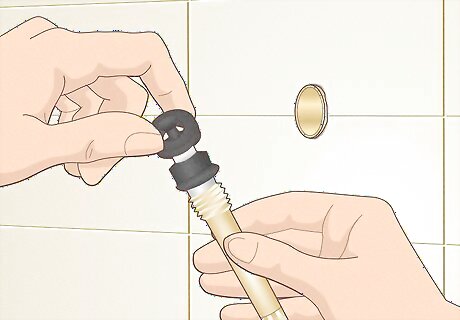
Replace the seat washer if it’s cracked. The seat washer is the round black rubber piece at the end of a faucet stem in a two-handle faucet. Use a screwdriver to loosen the screw at the end of your faucet stem and pull the washer out. Put on a new seat washer made for your faucet onto the end, and tighten the screw to secure it down. The seat washer presses against the seat to make a watertight seal to stop leaks. Buy a faucet replacement kit to get a pack of assorted washer sizes if you can’t find washers specific for your model of faucet.
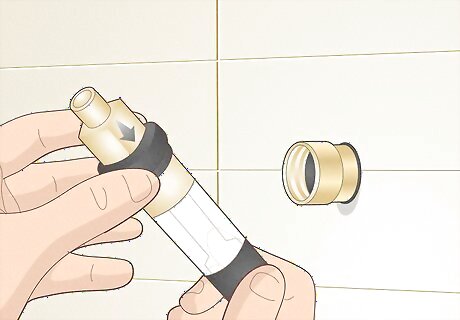
Slide a new bonnet washer onto the faucet if it looks worn out. The bonnet washer is the large rubber ring that fits around the middle of a faucet stem or cartridge. Simply pull the old, cracked washer off from the end of the faucet and slide a new one on that’s the same size. An old and cracked bonnet washer could cause a dripping faucet since small amounts of water can leak through. If the bonnet washer is crooked or raised, try straightening it out so it lies flat.
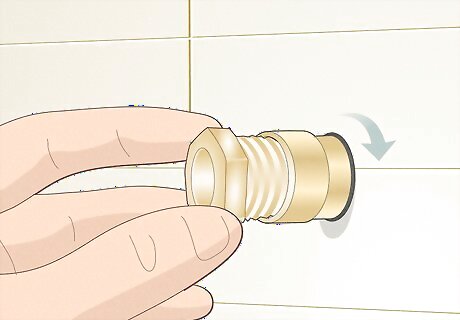
Screw on a new packing nut if it has residue buildup or rust. The packing nut is the brass hex nut that’s screwed onto the threading. Grip the metal casing around the faucet with one wrench and turn the packing nut counterclockwise with another wrench. Unscrew the packing nut off of the threading and screw on a replacement until it’s tight. If the packing nut corrodes, then it can’t create a watertight seal where it connects to the handle.
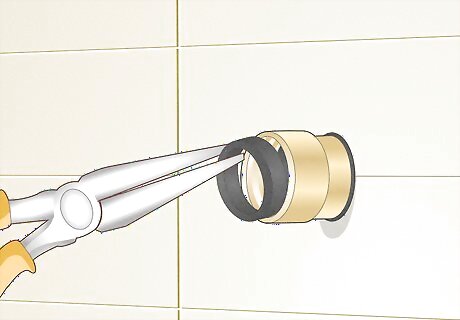
Put in a new packing washer if water leaks from the faucet handle. The packing washer is the cylindrical rubber piece found underneath the packing nut. Unscrew the packing nut from the threading and pull out the washer with a pair of needlenose pliers. Set a new packing washer inside of the casing and screw the packing nut back in to secure it.

Get a new faucet stem or cartridge if it’s severely damaged. If there’s a lot of corrosion or buildup on the actual faucet stem or cartridge, then it’s best to replace the entire unit. Get a stem or cartridge that’s made to fit the faucet model that you have to ensure it’s the right size. Install the new stem by screwing it into the valve in your wall, and put in a new cartridge by sliding it into the opening and securing the retaining clip. Ensure the faucet is in the full, open position so it fits all the way into the valve. Apply pipe sealant around the threading on a new faucet stem to help prevent the valve connection from leaking.
Reassembly and Testing
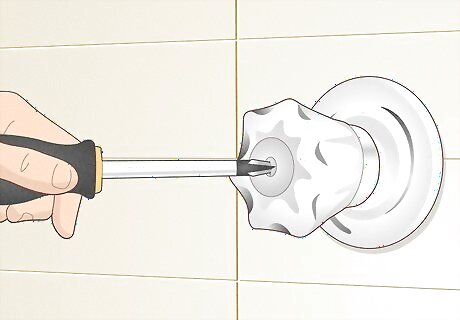
Reinstall the faucet, collar, and handle. Screw in the faucet stem, or push in the cartridge or ball so it’s secured against the valve. Then, screw the collar pieces back on until they’re tight. Finish up by screwing the handle back onto the end of the faucet and reattaching any decorative plates. If you removed any escutcheon plates, put a layer of plumber’s putty underneath them to prevent leaks from getting underneath and into your walls.

Turn your water back on to check your faucet for leaks. Go back to your main water valve and turn it counterclockwise so the water flows to your faucet again. Slowly turn on your faucet and let the water run through it. After a few seconds, turn your faucets off and check if the spout or handle is still leaking or not.
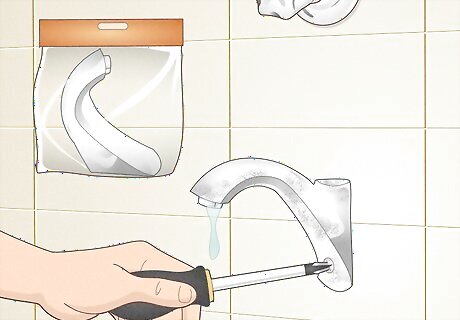
Replace the tub spout if it still leaks after your repairs. Check for a screw on the bottom of your tub spout and turn it counterclockwise to loosen it. Otherwise, turn the whole spout counterclockwise if it’s screwed directly into the wall. Remove any old Teflon tape that’s on the threading. Wrap a new layer of Teflon tape around the threadings and slide on the new spout. Screw the new spout in and apply a bead of caulk at the seam to seal it. The old spout may have worn out threadings that water could leak through. If your faucet still leaks after you change the spout, then contact a plumber to find out what’s causing it.












Comments
0 comment